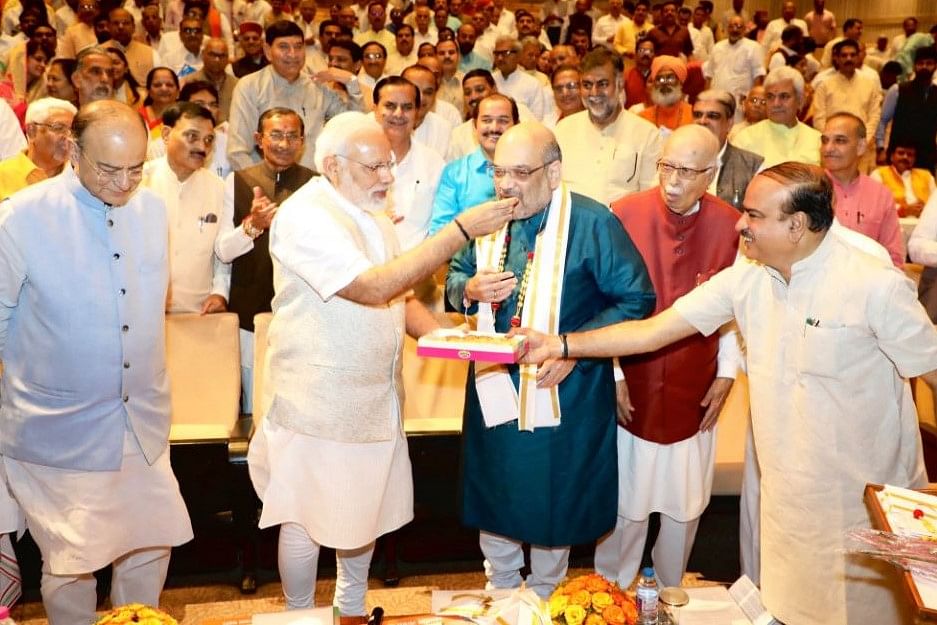The two most prominent and influential leaders in India today are from the same state, share the same mother tongue and party, have two distinct and complimentary styles of leadership while being in perfect sync with each other. They are our Prime Minister Narendra Modi and BJP president Amit Shah.
Five years ago, no one would have believed the prediction that Shah would lead the largest political party in the world, and that two-thirds of India would be under BJP/NDA rule. This transformation is because of Shah’s hard work, distinct style of leadership, deep understanding of the nation’s socio-political dynamics, laser-sharp focus, commitment to ideology, the ability to motivate workers at the grassroots and to face any situation through constant evolution.
Many years ago, it was a political crisis that Shah turned into an opportunity.
When the vindictive UPA government forced him to stay out of Gujarat, he chose to station himself in Delhi. It was the most difficult period in his life, but it was a boon in disguise. He travelled across the country, studying social dynamics and social coalitions on the ground. He also built a rapport with the who’s who in both the BJP and the RSS.
As a General Secretary supervising the performance of the party in Uttar Pradesh for the 2014 national election, he travelled to every assembly constituency and developed a personal connect with thousands of workers. The building blocks for his national leadership were laid during this period.
How Shah deals with party workers is best described as “tough empathy”. He is demanding when it comes to deliverables from the karyakartas. He states his expectations clearly, and is able to distinguish what the karyakartas need from what they want. Shah provides all the tools and resources they require to fulfil the goals he sets. He takes a personal interest in their well-being, but does not entertain unrealistic expectations.
The BJP president has also been successful in eliminating lethargy among party workers. From the day he became the president of the BJP, he started preparing for the 2019 elections.
Here’s an example: Shah regularly receives invitations to visit foreign countries. In the early days of my current role, I would obediently take these invitations to him. Knowing that I was new at the job, he would initially just keep them aside and smile.
One day, he asked me: “Vijaybhai, if I visit this country, how many more votes I will get?”
Shah has defied all conventional logic, assumptions and the predictions of mainstream pundits. Within the organisation, he has dissolved the perceived indispensability of few people in the support base, brought in new people, and mentored them.
Many of his pet projects are not only unconventional, but also unheard of in Indian politics. A classic example is his insistence on having a well-equipped library in every district office of the party. The seriousness with which he monitors this project while playing political chess, is simply amazing.
During the 2014 election campaign, our meetings with Amitbhai would typically start after 10 pm. He would first ask us if we had eaten our dinner. Being a foodie, he would sometimes take us to Karol Bagh for pav-bhaji and the meeting would start only post-midnight. Shah can effortlessly talk about historical incidents from the Maratha, Rajput, Mughal or British-era. He can also narrate stories of old Bollywood films, and songs written by lyricists Gulzar and Sahir Ludhianvi.
For students of management and politics, the political strategy and leadership style of Modi and Shah could make for a fascinating case study.
Vijay Chauthaiwale is in charge of the Foreign Affairs Department in the BJP
